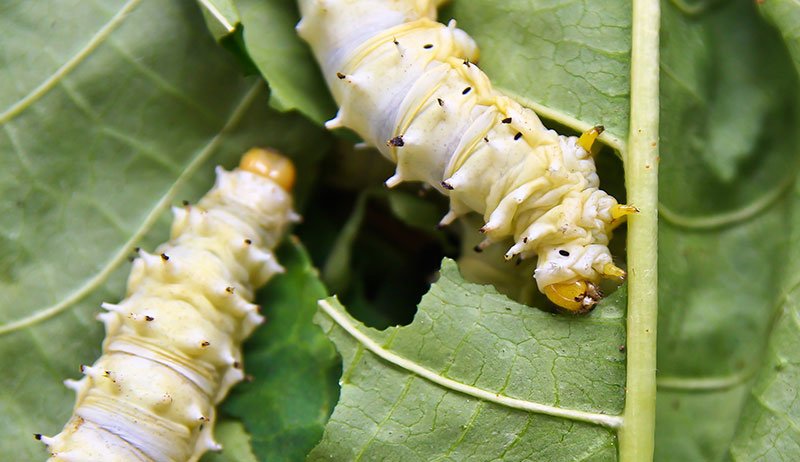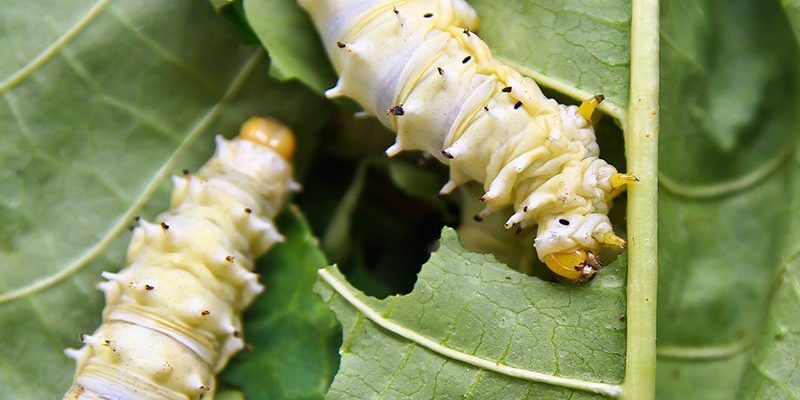
First things first, let’s clarify what silkworms actually are. Silkworms are the larval stage of the silk moth, *Bombyx mori*, and they’re mostly known for producing silk. While this might evoke images of wide-open fields or rural farms, they can actually thrive indoors with the right conditions. If you’re considering this endeavor, you’re likely wondering how to get started, what they need to survive, and whether you can keep them happy throughout the year. Here’s the scoop!
Understanding Silkworms’ Basic Needs
Silkworms are surprisingly simple creatures, but they do have specific requirements that can make or break your indoor raising adventure. To start, they need a **controlled environment**. That means keeping the temperature around 75-85°F (24-29°C) and maintaining solid humidity levels of about 60-70%. You might think, “Why so specific?” Well, extreme temperatures can lead to unhappy silkworms, and we know what happens when we’re not comfortable—nobody’s in the mood to work!
Next up is their diet. Silkworms primarily eat mulberry leaves, which might seem niche, but you can buy dried or processed versions if you can’t find fresh leaves. If you’re feeling adventurous, you can even experiment with other leaves, but stick to the ones that are high in nutrition. Think of it like feeding a toddler: you wouldn’t just toss them anything, right? Healthy food leads to happy, growing worms.
Setting Up the Perfect Home
Creating a comfortable habitat for your silkworms doesn’t need to be complicated. You can use plastic containers with ventilation holes for proper airflow. Make sure these containers are clean and lined with some paper towels to soak up any excess moisture. Think of it like giving your pets a cozy bed to sleep in!
Space is also crucial. Even though silkworms are small, they need room to grow and spin. If you overcrowd them, they might get stressed out, and stressed silkworms aren’t productive ones. Ideally, you’d want to have about 50-100 worms per container, depending on the size you choose.
Managing Temperature and Humidity
Temperature and humidity control is key to raising silkworms successfully indoors. If you live in a place with drastic seasonal changes, having a way to manage these factors is essential. For temperature control, using space heaters or air conditioning might be necessary.
You might be wondering, “How do I keep track of humidity?” A simple hygrometer can help monitor levels. If it gets too dry, consider misting the container lightly with water. Just don’t overdo it! You don’t want them to drown. Imagine trying to swim in a pool of Jell-O—tricky, right?
Using Heat Mats
Sometimes, you might need to get a little fancy. Heat mats are a handy tool for maintaining temperature, especially in chilly months. Place a heat mat underneath the containers, and keep a close eye on the thermometer. Just like Goldilocks—nothing too hot, nothing too cold—make sure the temperature is just right.
Feeding and Caring for Your Silkworms
Feeding your silkworms is not just about tossing in some leaves. There’s a bit of a routine to it. They munch on mulberry leaves for about 6-8 weeks before they start to spin cocoons. This growth phase can be quite fascinating to watch! You’ll find them munching away, and honestly, it’s kind of soothing. Their tiny jaws make a soft, crunchy sound, like a peaceful little orchestra.
The Feeding Schedule
A good feeding schedule goes a long way. Here’s a simple guide:
- **Days 1-3**: Feed them at least twice a day.
- **Days 4-6**: Increase the frequency to three times a day.
- **Days 7+**: They’ll eat a lot, so keep food available at all times until they stop eating and start spinning.
It’s essential to keep their food fresh. Wilting leaves can cause health issues, just like leftovers can make us feel a little off. Check for mold and replace any uneaten leaves regularly.
Challenges and Solutions
Raising silkworms isn’t just a walk in the park; they come with their own set of challenges. For instance, if you notice your silkworms aren’t eating well, it could be a sign of improper temperature or humidity. Here’s the thing: **pay attention** to their behavior!
If you see them not moving around much, it might be too cold or too dry. Adjust those levels accordingly and, usually, they should perk right up. Regularly checking on them is like giving a friend a call to see how they’re doing.
Dealing with Pests
Sometimes, pests can invade your silkworm habitat, which can be a real bummer. Keep an eye out for insects or mold, and isolate any affected areas immediately. It’s like when you notice something off in your favorite recipe—better to fix it before it ruins the whole dish!
Harvesting Silk and Completing the Cycle
Once your silkworms have matured, they’ll spin cocoons for about 2-3 days. This is where the magic happens. You’ll end up with beautiful silk fibers! To harvest silk, you can boil the cocoons in water to loosen the threads. The process can be delicate, but it’s rewarding, like finally getting that puzzle piece to fit.
Repurposing Silkworms
And guess what? After the silk harvest, you can recycle your silkworms into a nutritious treat for pets or even for yourself (yes, people eat silkworms in some cultures!). They are packed with protein, making them a versatile addition to your indoor farming experiment.
So, can silkworms be raised indoors year-round? **Absolutely!** With the right care, a bit of attention, and a warm, cozy environment, you can enjoy these fascinating creatures throughout the seasons. They’re not just about producing silk; they offer a unique glimpse into the natural world and can be a fun hobby for anyone curious about the life cycle of these amazing insects.
Whether you’re a gardening guru or a newbie, raising silkworms can be a fulfilling project that brings the wonders of nature right into your home. So, grab a cozy blanket, a cup of tea, and start your journey into the silk-spinning world!

